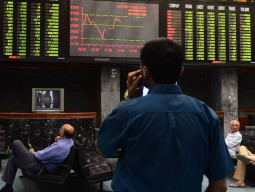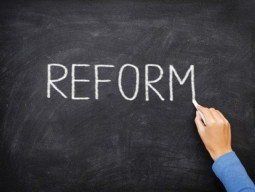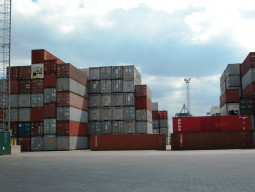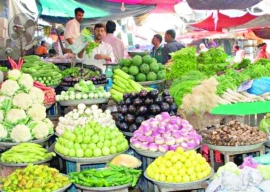
“SBP has revised down its projection for real GDP (gross domestic product) growth during FY19 by 0.5 percentage point to 3.5-4.0%,” the central bank said in its second-quarter (Oct-Dec 2018) report on the state of economy on Monday.
The economy was set to slow down in the second half (January-June) as inflation was likely to rise further, revenue collection would drop and fiscal deficit would widen further, the central bank said.
“Regarding price pressures, inflation is expected to remain high in the second half of FY19,” it said. “CPI inflation (is projected) at 6.5-7.5% for the full year,” it added.
China deposits $2.2 billion in SBP reserves
The SBP projected that the fiscal deficit would further deteriorate by 0.5% of GDP, which brought it close to the level hit in FY18.
Large-scale manufacturing (LSM) contracted further in the second quarter. Moreover, “given that public development spending, a key driver for private sector industrial activities, is unlikely to pick up anytime soon, the full-year outlook for manufacturing activities remains subdued,” the SBP said.
Furthermore, private consumption is going to remain lower due to a tighter monetary policy and pass through of exchange rate depreciation, which has resulted in both higher energy prices and core inflation. In addition, according to the SBP, the prospects for the upcoming wheat crop remain subdued in terms of growth.
“All these aspects are going to constrain the services sector in the coming months as well,” it said.
Inflation is expected to remain high “due to the second round impact of recent exchange rate depreciations, upward adjustment in gas and electricity prices and higher budgetary borrowing from the SBP.”
However, the lagged impact of policy rate increases would be instrumental in keeping demand pressures under check. Acknowledging these risks, the SBP continues to project average CPI inflation at 6.5-7.5% for the full year.
As noted earlier, the primary deficit has increased further while there has been a sharp reduction in development expenditure in order to improve the fiscal position. This situation has become more challenging as the growth in current expenditure inched up to 17.3% in the first half as compared to 13.5% last year.
On the contrary, revenue collection contracted 2.4% in the same period as compared to the growth of 19.8% last year.
Since there is limited room to curtail government expenditure in coming months, it is the growth in revenue that will be instrumental in determining the overall fiscal position for FY19.
Incorporating the performance of revenue collection in the second half in the last four years, the SBP projected that the fiscal deficit would further deteriorate by 0.5% of GDP, which brought it close to the same level as in FY18.
Current account deficit
As for the external sector, while the current account deficit (CAD) improved $1.7 billion in first seven months of FY19, it was still high at $8.4 billion. “Some improvement is expected to continue in the remaining months as imports are likely to contract further on account of moderating domestic demand and relatively low international oil prices as compared to the beginning of FY19.”
However, merchandise exports are expected to miss the target due to waning demand in certain export destinations. Additionally, this is compounded by competitive pressures in the international arena and the lack of diversified and higher value added products that can effectively utilise the export quotas allowed under specific trade agreements.
“Meanwhile on the external financing front, the efforts of the government have started to materialise in the shape of bilateral inflows from Saudi Arabia, the UAE and China. Some of these inflows have already been realised while the rest are due in 2HFY19.”
Along with the Saudi deferred oil payment facility, these inflows have an important role in meeting the external financing gap for FY19, thereby, easing pressure on foreign exchange reserves and mitigating volatility in the foreign exchange market, it said.
Published in The Express Tribune, March 26th, 2019.
Like Business on Facebook, follow @TribuneBiz on Twitter to stay informed and join in the conversation.


















COMMENTS
Comments are moderated and generally will be posted if they are on-topic and not abusive.
For more information, please see our Comments FAQ